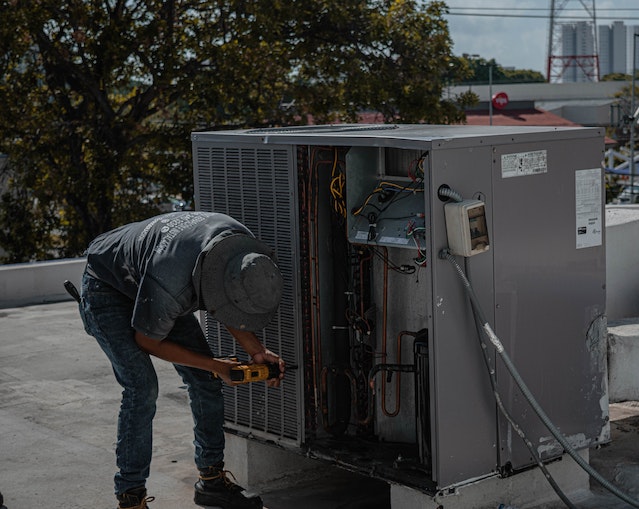Insurance companies compensate the insured entity for losses, even if a third party causes them. This payment is called subrogation. But what happens when you waive your right to subrogation?
In this article, we’ll explain subrogation waivers. Read on to find out the benefits and risks of getting a waiver of subrogation.
What Is Subrogation?
Subrogation is a right transferred to your insurer; the responsibility of recovering compensation for losses incurred by or from a third party’s actions rests with the insurer.
Let’s say a cab driver runs a red light and crashes into your car. The auto insurance company that covers you will pay for the loss but will also pursue the cab driver’s insurer to recover the money.

What Is a Waiver of Subrogation?
A waiver of subrogation (or subrogation waiver) is a contract in which the insured entity waives the insurer’s rights to pursue compensation from a negligent third party.
Let’s use the same cab driver analogy. If you have a subrogation waiver, the insurance company will cover the damages without seeking compensation from the responsible third party.
The most common application of subrogation waivers is between contractors and subcontractors. Both parties often decide to enter these agreements to protect themselves from liability.
Insurance packages with subrogation waivers have a higher premium than those without one. In some cases, insurance companies charge extra for waivers.
How Does a Subrogation Waiver Work?
To understand how this waiver works, here is a sample scenario:
CoolPanda is a company that sells air conditioners in low-income neighborhoods. For the installation, they hire a subcontractor MountAC to install the sets in homes, which makes them a third party in the agreement.
One day, a MountAC employee fractures their wrist during the installation, causing them to accidentally drop the air conditioner on the tiled floor. In this scenario, MountAC’s insurance policy will cover the property and employee damages.

But if that policy contains a waiver of subrogation, MountAC’s insurer will not be able to seek compensation from CoolPanda’s insurer.
When to Use a Waiver of Subrogation
You can add a subrogation to insurance coverages, including auto liability and workers’ compensation. Here is a detailed list of waiver examples.
Construction
Any agreement between a contractor and subcontractor should contain a clause that waives subrogation, in which the contractor relinquishes the right to sue third parties for damages. This means that the contractor will cover all the losses and damages without reimbursement.
Using subrogation waivers improves the speed of construction by eliminating unnecessary delays caused by legal action due to damages. Otherwise, the construction effort will stall indefinitely until the investigations reach a decisive conclusion.
Lease agreements
When leasing property, you can use a subrogation waiver to prevent the insurer from recovering civil damages in place of the property owner.
When landlords and tenants sign rent agreements containing subrogation clauses, both parties will protect themselves from litigation. In most cases, this leads to a harmonious landlord-tenant relationship.
Events
Subrogation clauses for events prevent your insurer from obtaining compensation for damages on the event site. In this scenario, your insurance policy will have to cover the damages even if the event planners are responsible for the damages.
Auto insurance
You can also apply subrogation waivers to automobile insurance, specifically for accidents. In such cases, the insurance company covering the party at fault can decide to settle the damage claims without involving the injured party’s insurer.
If the injured party accepts these conditions, they relinquish the right to sue the responsible party for damages. They also forfeit the right for their insurer to pursue future claims on their behalf.
Apart from private car owners, transportation and trucking companies can also use subrogation waivers to prevent third parties from paying for damages.
Mutual waivers
A mutual waiver of subrogation allows both parties to waive their rights to sue each other. This often applies to losses covered by commercial property insurance. Therefore, they usually apply to landlord-tenant agreements.
Unilateral waivers
As the name suggests, a unilateral subrogation waiver covers only one side of the agreement. For lease agreements, the landlord asks the tenant to relinquish their rights to sue them for damages.
At the same time, the landlord can still sue the tenant for damages to the property. This means that the tenant’s insurer must bear any damaged property costs.
Benefits of Subrogation Waivers
Here are the advantages of using subrogation waivers.
- They protect you from general liability. With the help of subrogation waivers, you can transfer risk between parties as stipulated in a contract.
- They cover workers’ compensation. If you incur work-related injuries, your insurer can pursue compensation from liable parties on your behalf.
- They eliminate business conflicts. Subrogation clauses get rid of potential business conflicts by preventing you or your insurer from seeking payment for damages from the responsible third party.
- They protect you from litigation. Subrogation waivers can protect you from litigation even if you are responsible for the injury or damage. As a business owner, this will give you some peace knowing that your insurance policy will cover the losses.
- They keep your business running smoothly. Instead of going through protracted investigations and litigation processes, the subrogation waivers can help keep businesses running smoothly. This is essential in the construction industry.
Drawbacks of Using Subrogation Waivers
Now that you know the benefits of using waivers, let’s discuss the risks of adding them to your contracts.
- Adding a subrogation waiver to a contract costs your company money. For starters, you may need to pay the insurance company an extra $50 to include this clause in the agreement. Although this might not seem like a lot of money, the costs could subsequently add up.
- Subrogation waivers can increase your Experience Modification (E-Mod) calculation, which will increase the amount you pay for workers’ compensation over a 3-year period. This will put you at odds with your insurer.
- The insurance company will increase your premium to offset the risk of loss. Sometimes, a subrogation clause could erase any potential dividend you have with your insurance company.
- Your insurance carrier could hold you for a breach of contract if you accept a waiver of subrogation without notifying them. In extreme cases, you could lose your coverage.
Tips for Waiver of Subrogation
Getting a subrogation waiver right can save your business money and help it run efficiently. But when you get things wrong, you might end up spending a lot more than any potential savings. So, here are some tips to keep in mind for your waiver of subrogation.
- Read through the contract carefully to make sure you understand the stipulations of the agreement. To make sure the subrogation waiver doesn’t put you at a disadvantage, seek legal counsel.
- Notify your insurer before signing a third-party contract containing a subrogation waiver. If you don’t inform the insurer, this might result in conflicting contractual conditions. As a result, your insurer could refuse to cover the claim or even cancel your coverage entirely.
- Consult other subcontractors. In industries like construction, you could be in contracts and subcontracts with multiple entities simultaneously. To avoid conflicts, you must keep them all informed before signing a subrogation release.
- Discuss costs with your insurance carrier. Some insurance companies charge a standard fee for subrogation waivers while others increase your premium. Talk to your carrier beforehand to find out which payment option works best for you.
- Use legally binding waiver management software. Tools like PandaDoc Waivers allow you to collect, store, and share waivers. They also allow you to add legally-binding signatures to your subrogation waivers easily.
Conclusion
Waivers of subrogation allow you to relinquish your insurer’s rights to pursue compensation from a third party that caused damages. Companies in construction, automobile insurance, and real estate can use subrogation waivers. But to make sure adding a waiver of subrogation is the right option for you, consult your insurance carrier.


